
views
Positioning Yourself
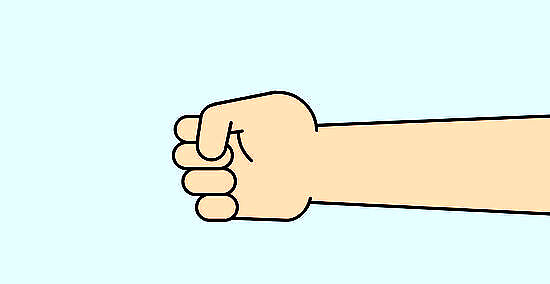
Clench your fists. Curl your fingertips against your palm and place your thumb against the outside of your knuckles. Positioning your fingers this way creates a shape that's four times as stable as an open hand. This stability will help you block blows, and land a punch yourself if necessary.
Raise your fists to your face. Bring your fists up directly in front of your cheeks, protecting as much of your face as possible. This way, your opponent will have a smaller target to strike. This is important, as a blow to the face has a significant chance of causing a concussion, where your brain collides with the back of your skull. EXPERT TIP Ross Cascio Ross Cascio Self Defense Trainer Ross Cascio is a Krav Maga Worldwide self-defense, fitness, and fight instructor. He has been training and teaching Krav Maga self-defense, fitness, and fight classes at the Krav Maga Worldwide HQ Training Centers in Los Angeles, CA for over 15 years. He helps people become stronger, safer, and healthier through Krav Maga Worldwide training. Ross Cascio Ross Cascio Self Defense Trainer Put your hands in front of your face to protect your soft spots. If you're going to get hit, it's better to get hit from the eyebrows up. Everything below your eyebrows is soft targets that can cause vision or breathing difficulties if they're hit. Raise your hands so that they are in front of your face and tuck your chin down so that your forehead comes slightly forward.

Hold your elbows tight against your body. The organs in your abdomen are some of the most dangerous places you can get punched. As a result, you should keep your elbows directly in front of your torso to protect these areas. However, keep them loose enough so that you can move quickly in response to blows. Here are the most important areas to protect: Your liver, just below the right side of your rib cage. Getting punched here can cause you to collapse due to the drop in blood pressure. Your spleen, on the upper left side of your torso. The rib cage does protect this already, but it's still best to keep one arm in front of it. Damage here can cause major internal bleeding. Your kidneys, on the left and right side just above your waist level. Trauma here can lead to kidney failure.
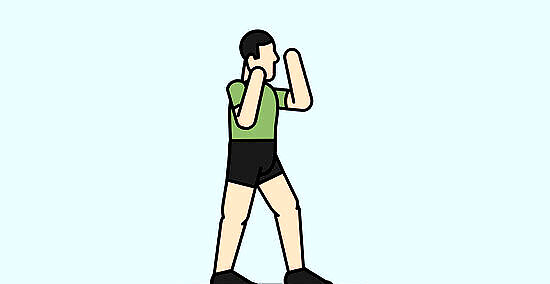
Adopt a wide stance. Stand with your knees bent and your legs firmly underneath you. This lowers your center of gravity, helping you stay balanced. It also makes you a more difficult target to hit, since you'll be poised to move and dodge if you need to. Turn your body slightly away from the oncoming attack to protect your center line, including your groin, solar plexus, and throat. Position your dominant foot slightly forward and keep a little more weight on your back foot, so you'll be poised to strike back.
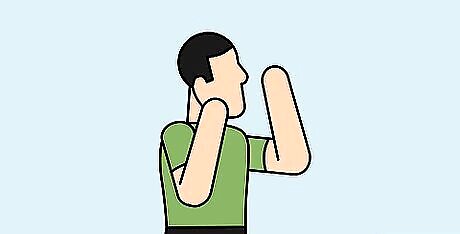
Keep your mouth shut and your jaw closed. When you expect to get hit, close your mouth and jaw and pull your tongue away from your teeth. If your jaw is open when you get punched, it could lead to a broken jaw or teeth. In addition, if your tongue is in the wrong position, it could get bitten.

Tuck in your chin. After raising your fists, tuck your chin down slightly. However, make sure not to tense or stress your neck. Your posture should be loose and relaxed. Ultimately, tucking your chin will reduce the area of your face that is exposed. In addition, it will limit your opponent’s access to your neck. Don’t bend your neck so much that you can’t see your opponent.
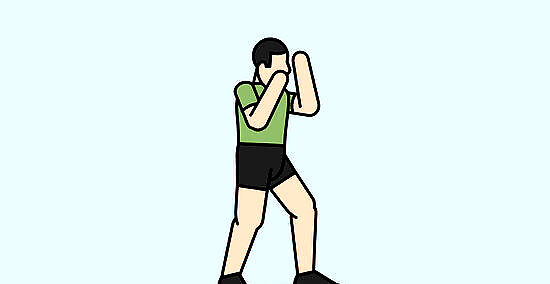
Relax your posture and keep your muscles loose. As you’re waiting for the punch, remain loose and relaxed. This is important as the impact will hurt you less if you’re relaxed. In addition, by staying in a relaxed posture, you’ll be better able to react quickly to the punch. You may be able to dodge it or minimize its impact on you.
Minimizing the Impact

Wear protective equipment (if possible). Traditionally, professional boxers and other competitors have worn mouth guards and other equipment to limit damage to their heads. However, recently, professional boxing associations have announced that protective equipment does not reduce brain injury. As a result, you should decide for yourself if you want to wear protection.
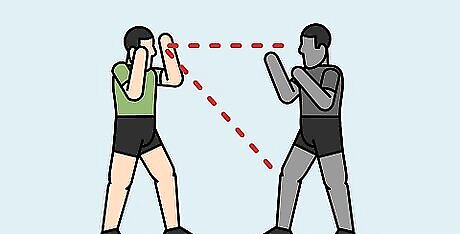
Watch the movements of your attacker. Stay alert and keep your eyes open. By watching your attacker, you’ll get a lot of information about how they’re planning on striking you. Ultimately, the best way to take a punch is to understand where you’re going to be punched. Without knowing this, you won’t be able to adjust and minimize the impact of the punch. EXPERT TIP Tsahi Shemesh Tsahi Shemesh Self Defense Trainer Tsahi Shemesh is a self-defense expert, specializing in Krav Maga. He began learnring Krav Maga in 1988, and trained directly under Imi Lichtenfeld, the founder of the sport. Shemesh is the Founder and Program Director of Krav Maga Experts in New York City. He has certified hundreds of instructors, trained a wide variety of professionals (including EMTs and NYPD officers), and his curriculum is taught in over a dozen countries worldwide. Tsahi Shemesh Tsahi Shemesh Self Defense Trainer If getting hit is inevitable, the best thing you can do is to go to the ground. Going to the ground is usually the last thing you want to do, but if you've already been hit and you're groggy, or you're about to get hit, disengage from your attacker and go to the ground. You'll buy yourself time and create space between you and the attacker.
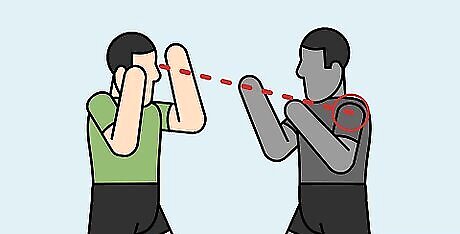
Observe their shoulder movement. Shoulder movement is usually your first clue that a punch is coming. If their shoulder moves low, they will be striking you low. If their should moves high, they will be striking high.
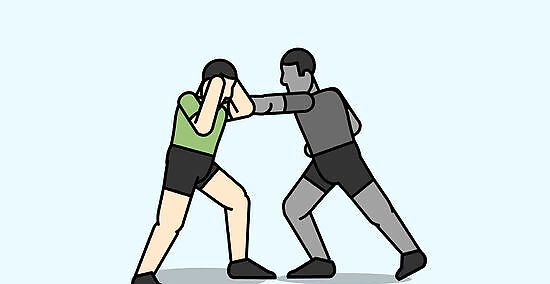
Dodge the attack. If someone is jabbing at you or throwing a cross punch, you can dodge their attack by slightly bending your waist to the side. In this, you’ll “slip” out of the path of the punch. The key here is to not run from the punch, but to sway yourself a little to the side so they don’t make contact with your body.
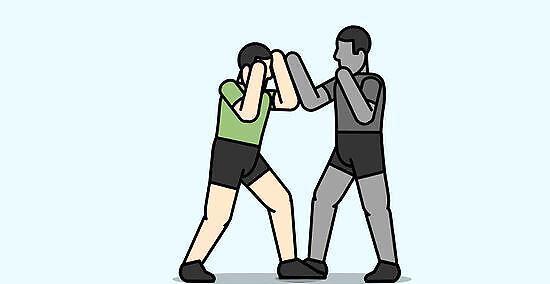
Move toward your opponent. If you have fast reflexes, you can move within arm's reach of your attack so the punch doesn't reach full force. While this might seem like an aggressive move, it may lessen the impact of the hit on you. It could also unsettle them and mess up their aim. This can backfire if you get your timing wrong, so it's best used in desperate situations only, such as if your back is literally against a wall or you are trying to escape.
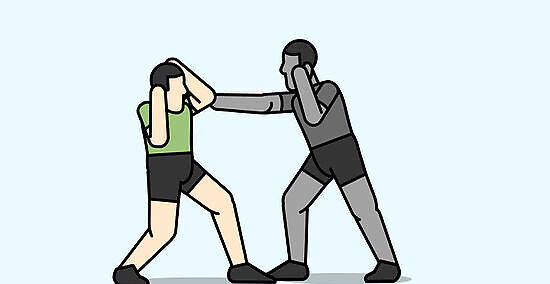
Roll toward and away from the punches. The best fighters are fighters who can take punches by rolling with them. Do this by pivoting your hips and rotating in the direction that the punch is headed. Then, pivot your hips away from the punch. Ultimately, you’ll make a rolling motion with the punch so its power is deflected off you.
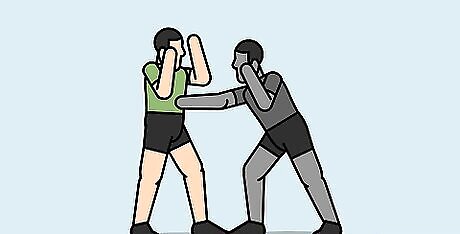
Use strong muscles to your advantage. If you have strong abdominal muscles, tensing could reduce potential injury to you. This is because your muscles will absorb the force of the punch and protect organs, bones, and other more vulnerable parts of your body. Attempting this with weaker muscles may be less effective than rolling with the punch. In addition, tensing weak muscles could result in injury to yourself.
Recovering from the Punch
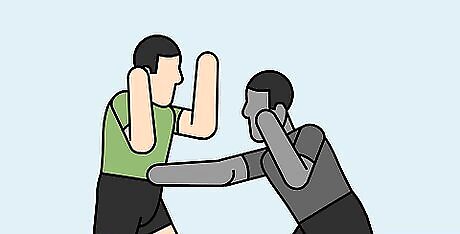
Breathe out as you get punched. Try not to get hit while breathing in or holding your breath. This will only result in you getting your breath knocked out of you. When the body is shocked like this, it's unable to respond for several moments, giving the assailant time to land another punch. As a result, try to exhale as your attacker strikes you. Shooting a short burst of air from your mouth or nose will also flex your abs, which may help if they're strong enough to absorb a blow.
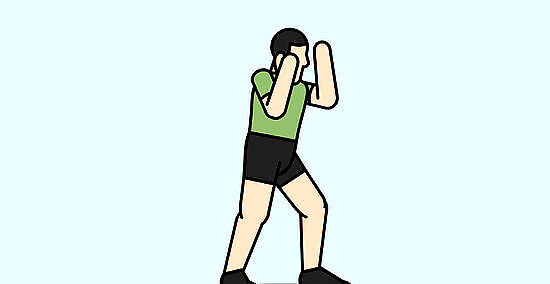
Stay balanced. Your legs will feel weak or shaky after you get punched. Remember to keep your legs apart and your knees bent despite this feeling. If you step off-center or straighten your knees, your opponent will have an easy time knocking you to the ground.
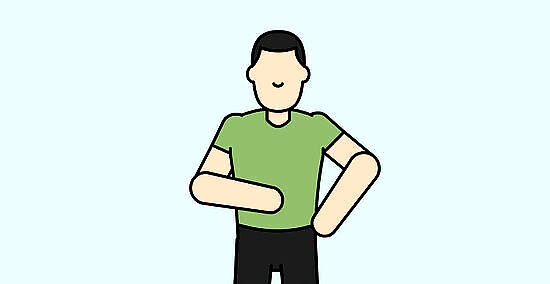
Check to see if you’ve been bruised or have signs of physical injury. Pay special attention to bruising that appears in the moments after getting punched. Examine your abdomen, especially. Bruising or discoloration on your abdomen could be a sign of internal bleeding. Contact a medical professional if you have serious abdominal bruising and pain.
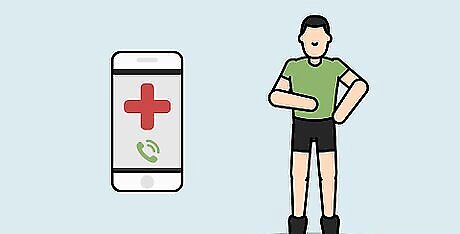
Examine yourself for a serious head injury or trauma. Have a doctor or a friend talk to you. Respond to them. Have them verify that your speech is not slurred, your pupils look normal, and you can hear them. A brain injury can take a few hours or days to show symptoms. Have a friend keep an eye on you after the fight. Schedule an appointment within the next 24 hours if you feel confused, sleepy, nauseous, lose memories, vomit, have a headache, or lose vision. Seek emergency services immediately if you have trouble thinking or moving, have a severe headache or stiff neck, feel extremely sleepy or lose consciousness, vomit more than once, or develop unusual eye movements or pupils of unequal sizes.

















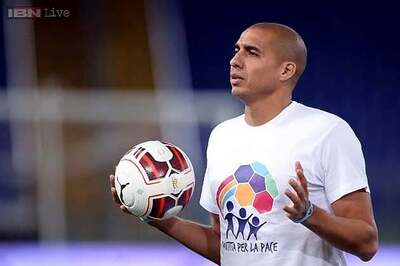


Comments
0 comment